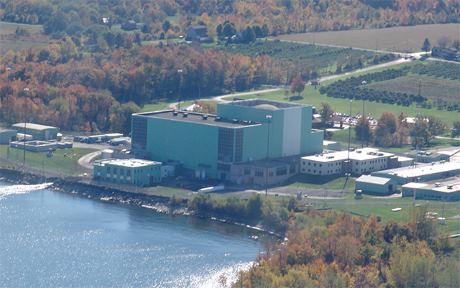NEI highlights Ginna benefits
08 May 2015
The state of New York will face losses of $358 million per year in economic benefits and residents will face higher electricity bills if the RE Ginna nuclear power plant is forced to close, the US Nuclear Energy Institute (NEI) has told state regulators.
 |
| RE Ginna (Image: Exelon) |
Ginna is one of six nuclear reactors supplying nearly 30% of the state of New York's electricity, and has operated at more than 95% capacity over the past ten years - above the industry average and significantly higher than all other forms of generation. However, according to the NEI, the facility could find itself forced to shut down "due to a confluence of electricity market factors".
The New York State Public Service Commission is considering the future of the single-unit 581 MWe pressurized water reactor, especially its importance for system reliability, since concerns were raised that owner and operator Exelon could not operate the merchant plant economically. Merchant plants operate in states with deregulated electricity markets where competing suppliers sell electricity directly to customers. Nuclear operators within deregulated markets face challenges from the short-term nature of the competitive market, coupled with competition from low-cost gas and federally subsidized wind power.
In its submission to the Commission, the NEI noted that the closure of the plant would result in the loss of some 1500 jobs and $358 million of annual economic benefits, as well as over $10 million in state and local property and sales taxes.
Furthermore, Ginna's capacity would have to be replaced, most likely from gas-fired power plants. According to NEI vice president of policy development and planning, Richard Myers, this would mean higher prices. "Electricity produced at a new natural-gas fired power plant would be more costly than the Ginna plant, thereby penalizing New York consumers," he said.
The plant is also important for the state's clean air objectives. A study prepared by the NEI earlier this year found that Ginna's operation had prevented the release of more than 2 million tons of carbon dioxide annually, the equivalent of taking about 400,000 cars off the road.
Researched and written
by World Nuclear News